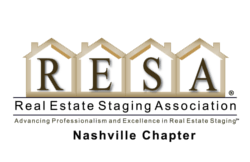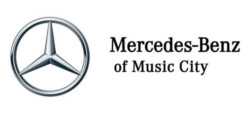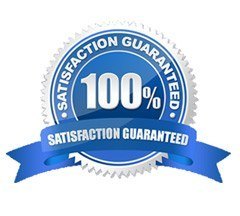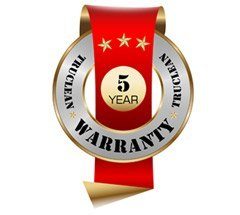How To Clean Roof Shingles
Roof Cleaning The Proper Way
Roof Cleaning has a few steps involved, the first and most important step is identifying what treatment is going to be needed to get the roof cleaned, with the least amount of collateral damage to the roof itself, and the landscaping if there is any. In this article we go through the entire process from start to finish, if you are going to have a professional clean your roof. This article is about how the pro is thinking when they walk the property, and about what methods they use in removing the harmful algae that is infesting so many roofs around the country.
What Is The Algae On Your Shingles?
Diagnosing what treatment to use when roof cleaning is as simple as taking a walk through the property with a professional. A professional will be able to take a look into what is actually growing on your roof, and will know the correct application in order to treat the algae and the amount of time it will take to remove it.
Let’s talk about the two types of algae we come in contact with on a daily basis.
What Causes Black Streaks On Roof Shingles?
Diagnosing what treatment to use when roof cleaning is as simple as taking a walk through the property with a professional. A professional will be able to take a look into what is actually growing on your roof, and will know the correct application in order to treat the algae and the amount of time it will take to remove it.
Let’s talk about the two types of algae we come in contact with on a daily basis.
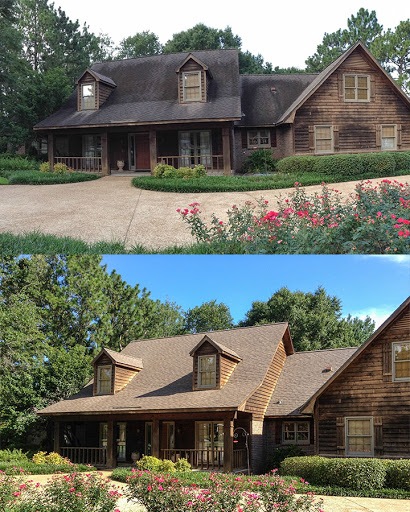
Two Common Types Of Algae On Your Roof
Fire Moss - Fire Moss is less common than the Gloeocapsa Magma below but is still very prevalent on many roof substrates, from cedar shake to asphalt shingles, it loves to latch on and reproduce. When fire moss gets out of hand, it will push up your shingles allowing water to get underneath and severely degrading your roof.
Gloeocapsa Magma - This is the old "black streak on my roof" culprit. It is most common on Asphalt shingles and can is a spore based algae, it lives on the limestone in your shingles. When it feeds it degrades the limestone and eventually if left untreated, will take over the whole roof making it look “all black” when that is not the color of the shingle itself, that is in fact the algae growing on the shingle.

Roof Cleaning With A Pressure Washer
Some may believe that you can clean your roof simply with a pressure washer, and while that would probably work theoretically, using a pressure washer for roof cleaning is the “kiss of death” for the integrity of that roof. Especially if you are trying to clean an asphalt shingle roof. The granules will start to come off and will end up in the gutters, which can and does happen normally with age, but speeding up the aging process for the roof, is not the best idea and is something we avoid.
What Is The Best Way To Clean A Roof
We get this question all the time through some of the guys that we train and through clients who are interested and concerned about the treatment involved. There are different ways to clean different substrates, but lets review the most common substrate and how to clean asphalt shingles.
Cleaning Asphalt Shingles
Asphalt shingles, per the manufacturer, are not supposed to be walked upon or have anything applied to them over the pressure of a common garden hose, which is about 70 psi. So when cleaning an asphalt shingle roof, one should take great care in applying only the right amount of chemical and a very low pressure in order to keep the shingle in tact and to maintain its long life. Roof Cleaning at a low pressure, allows you to treat and kill the algae, but not harm any of the structural integrity of the roof itself.
This process is commonly referred to as soft washing in the industry and is simply a means of allowing the chemical to do the cleaning as opposed to high pressure. It is the safest and best way to clean your roof and your asphalt shingles.

Cleaning Roof Shingles With Bleach (Pool Shock)
When you are thinking about having that nasty algae removed from your roof, consider hiring a professional; someone who is used to using chemicals around high end landscape and will take care of your house as if it were their own. Great care should be taken when starting down the road of getting your roof cleaned, as the dangers of killing any landscaping are high if the person does not understand their chemicals capabilities and does not understand their rinse process completely.
After you inspect where the gutters (if you have them) exit and you confirm that they don’t exit directly into any plants or trees, you can begin with the next part of the process. Chemical Ratios.
Since the most common form of algaecide used in the professional pressure washing industry is 12.5% Sodium Hypochlorite (Pool Shock), the next few sections are going to explain exactly what chemical ratios you are going to want to use when cleaning roof shingles. The mixtures below are going to range from most concentrated to least concentrated and I will also explain why you would choose to use either.
Ps: Consumers are only going to be able to purchase bleach at the hardware store at 6.5% (nearly half the potency of what the professionals will be able to purchase.)
- 75% Sodium Hypochlorite - 25% Water - This mixture would be used for hearty algae, fire moss and lichen.
- 50% Sodium Hypochlorite - 50% Water - This mixture could be used for black streaks or gloeocapsa magma, or light black algae.
- 25% Sodium Hypochlorite - 75% Water - For the lighter Gloeocapsa Magma stains, we wouldn’t use this mixture on fire moss or real hearty algae.
So after you have your pool shock and water mixed in your garden sprayer, we are going to climb on the roof and start delivering the goods to this algae. (Ps: Be very careful when getting on your roof, if you cannot climb well or are scared of heights just hire a professional to complete the entire process.)
Cleaning An Asphalt Shingle Roof | Step-By-Step
- Protect All Vegetation - Pre Soak and Direct Flow Of Gutters - Before we get started cleaning our roof we want to make sure that all vegetation is completely pre-soaked, with water. This process will insure all cells of the plant are saturated, and when the cells are saturated, the plant will not absorb our chemical through the leaf layer. You still will need to post rinse though, for extra plant protection and insurance.
- Mix Your Roof Cleaning Chemicals in your garden sprayer. Refer to the mix ratios above. Start with a 50/50 mix for most asphalt shingle roofs, this will insure your chemical is “hot” enough to actually get a result you would be happy with.
- Start High On The Roof - Work your way from top to bottom applying and even coat of "roof cleaning chemical." Some like to toss a 1/4 cup of gain green dish liquid (not the laundry detergent) in their mix to allow a slower run of chemicals down the roof. This helps our active ingredient stay wet longer so it has time to work on the algae we are trying to kill.
- Less Chemical Is More - Less in more in the sense that you shouldn’t have chemicals running like a river down your roof. If you are using a garden sprayer, you are not likely to get this type of volume out of your sprayer so you probably don't need to worry about this portion.
- Double Treat Problem Areas - If algae hasn’t disappeared or turned a white color within 5 minutes of applying the first coat of roof cleaning chemical, reapply in the same fashion. Some fire moss and other overgrown moss may give you trouble because it is a much more hearty version of the gloeocapsa magma (the black algae) so you will have either two options to kill it and remove it from your roof. Spray more chemicals on it, until it turns white, or spray a hotter mix of chemicals on it again until it turns white and is dead. (refer to the ratio diagram above)
- Re-Soak Plants that could have received mist or a coating from the Pool Shock mixture that you just applied. This is the step most young professionals skip and sadly, if you skip it, it can cost you your landscape. Re Soaking and rinsing your plants after you have applied your chemical insures that your plants will live a long life after your roof cleaning treatment has done its work. You especially want to do this if you know that you have gotten some overspray on the plants previously. - This is a VERY important step! Do not skip it!
- Safely come down from the roof on a ladder and allow the process to work organically. After applying there is nothing else that you need to do, just let the chemical do the work. After applying there is nothing else that you need to do, just let the chemical do the work. Check back in a few weeks to see if any chemical needs to be reapplied to the roof shingles, if so bookmark this page so you can refer back to the chemical mix ratios when you need to.
How To Clean A Metal Roof
How to clean a metal roof like a PRO!
By Roof Cleaning Pro - Pierce Parker of https://www.softwasherz.com/
Cleaning a metal roof can be a very tedious and lengthy process depending on which way you decide to go about it. There are many types of metal roofing types, coatings to work with, and variables involved on every job. Every metal roof cleaning evolution is different with no two being the same ever!
What Algae Is Growing On My Metal Roof?
The first question to ask is, What in the world is growing on my roof and turning my roof black, green, orange, or any color besides what it is meant to be? We highly recommend calling a roof cleaning professional and walking the property and identifying exactly what is growing on your metal roof and creating a plan of action to clean it. There are several types of algae that thrive on a metal roof surface.
Most Common Types Of Organic Growth On Your Metal Roof
Roof bacteria can reveal itself in many different forms and appearances. You may think you have mold growing on your metal roof, but it really could be moss, mildew, algae, lichen, or Gloeocapsa Magma. Metal roofs typically turn black with a greenish tint to it when they are saturated with organic growth. Organic growth can also grow on wood, asphalt shingles, concrete, slate tiles, Spanish tiles, and many other substrates especially if the sunlight is not so good in that area.
Gloeocapsa Magma
The most common class of roof algae is Gloeocapsa Magma, which is a bacterium that thrives off of water and in return expels oxygen afterward. This is what causes those black streaks on your metal roof! These dark stained areas are actually a conglomeration of algae that can prevent the sun from burning off the organic growth from your roof’s surface.
Lichen
This type of roof growth is a combination of algae and fungus. When these two growths get together they can produce living organisms living on your roof. The lichens will use their perennial root structure to attach tightly and stubbornly to your metal roofing surface which makes them extra difficult to remove. If you do not remove the Lichen in a timely manner, they can damage your roof permanently and even cause surface rust which can turn into structural damage weakening your roof’s composition.
Roof Moss
Moss is similar to Lichen in many ways since it has a strong root system called rhizoids which anchor its body to your metal roofing surface. The moss then can team up with the Lichen and create a layer of organic growth super power lichen/algae ecosystem on your roof by collecting organic dust, dirt, and organic particles to feed itself and continue to grow.
Mold
This is the one everybody is worried about especially on the inside of the home! Mold is a very un-healthy plant that can grow on your roof. Moldy roofs can be detected in brown or black areas, or it can accumulate as a stinky smelling area that can be slippery as well. Mold loves areas rich with water such as rainy climates or an area where the irrigation system is constantly spraying every morning.
Mildew
Mildew is similar to mold as in it can thrive in mildlyd wet areas and cause health issues. It can appear as a powdery substance and have many different colors and hues or shades. Colors of mildew growths can range from pink to a dark black.
Can I Use A Pressure Washer On A Metal Roof?
The absolute very LAST technique you want to use on your metal roof is the strictly high pressure washing method with a high pressure tip and damaging pressure washer. A metal roof is very strong against many earthly elements but highly pressurized water or high pressurize anything is not recommended! In fact, pressure will not even do anything for you as far as cleaning the roof is concerned. A metal roof is constructed seamlessly or with screws and those screws have a rubber gasket and the high-end screws have a metal cap over the gasket for extra protection. Pressure Washing can damage these screws and expose the weak areas of your roof causing roof leaks in your metal. High pressure can also damage the finish on the roof as all roofs are made of different qualities, metal compositions, and more variables. The optimal amount of pressure you want to use when washing a roof is around 100-300 PSI and preferably HIGH-FLOW & LOW-PRESSURE. We consider HIGH-FLOW approximately 8 gallons per minute of water flow or greater.
What Is The Best Way To Clean A Metal Roof?
This question is a very important one, but of course with every roof job and all the different variables that can be involved, every roof cleaning can be different! We typically create a CUSTOMER PLAN OF ACTION from preparation, protection, cleaning, clean-up & post-cleaning. This next paragraph will explain determining whether your roof is coated or un-coated.
Cleaning A Galvalume Roof
Metal roofing manufacturers produce all kinds of metal roofing materials and some have coatings and some do not have coatings. Once you determine whether your roof has a Kynar coating or a painted coating, or if your roof is exposed Galvalume with not much of a coating and very porous. Most grey metal roofs contain a very light thin coat over the top of the metal to protect from the elements and surface rust, but don’t be fooled, exposed Galvalume can be damaged faster than any other metal roofing surface due its very porous nature and can have the tendency to oxidize quickly and damage your roof if not cleaned correctly. Painted metal roofing surfaces can withstand much more chemical than exposed Galvalume as that paint is baked into the pores of the Galvalume and protects the metal very well from all of the elements and of course from an inexperienced roof cleaner! There are many different variables which affect roof cleaning as well such as the ambient temperature outside, sunlight, pitch of roof, and all variables alike. Landscapes such as shrubs, flowers, and trees are also another huge variable in roof cleaning as we’re killing the organic growth on your roof, it can also have the probability to kill the organic growth on the ground if not properly prepared and protected prior to beginning the evolution.
Best Solution To Clean Metal Roof
Before you learn this step, definitely consider hiring a highly skilled professional as your roof is probably one of the most expensive investments you make on your home and would be worth its weight in gold to have it cleaned professionally, safely, and effectively. The active ingredient we use and recommend is Sodium Hypochlorite. Most hardware stores keep Sodium Hypochlorite in jugs at 6.5% as that is the highest concentration they can legally sell to the normal consumer base. We get the product for about half the price as consumers can get it for as we purchase in large quantities and we also get a contractor discount because we buy so much. Also the concentration we are able to get is around 12.5% and is labeled as Sodium Hypochlorite/Pool Shock anywhere it is stocked. So here are the ratios for cleaning your metal roof.
5% Sodium Hypochlorite - 95% Water
We start all of our roof cleanings with this mix as it is the lightest mix we can use to clean a roof effectively without damage. We also use a soft bristle brush to break up the organic growth so we can utilize the least amount of chemical as possible and still achieve a premium clean! A lot of “professional” cleaners out there will want to use a large amount of chemical and just leave it on. Heed this warning, THAT IS INCORRECT AND WILL DAMAGE YOUR ROOF! Unfortunately we see it quite regularly.
10% Sodium Hypochlorite - 90% Water
This is the next option we go to if the first solution doesn’t remove what we want it to remove. Once again we use the least amount of chemical along with a soft bristle brush stroke to break up the organic growth and provide a premium clean in the process!
20%-50% Sodium Hypochlorite - 80%-50% Water
This is LAST PRIORITY and should only be attempted by a professional. This mix has the high ability to damage your roof if not utilized properly. You want to keep the roof wet at all times, never apply in the heat of the day, and keep the surface wet! A soft bristle brush stroke should once again help break up the growth and provide a premium clean. DO NOT USE this mix on exposed metal roofs as they are extremely porous and will cause the roof to prematurely oxidize and eventually rust out your metal roof. Painted roofs can withstand chemicals much better but still not recommended. The only way to prevent utilizing more chemicals than normal is to have your roof cleaned more frequently. The least chemical, the better, for everybody!
Metal Roof Cleaning Step-By-Step
- Preparation/Protection: Soak down and cover certain vegetation as required. It doesn’t hurt to have somebody or something constantly watering the plants while the roof cleaning evolution is taking place.
- Mix your metal roof cleaning concoction in your pump sprayer and get ready for action.
- Wet the entire roof with water, especially where you will be cleaning first. This will saturate the pore of the metal and allow you to achieve a premium clean!
- Utilize the least amount of metal roof cleaning chemical as possible when applying and then start brushing with your soft bristle brush!
- Re-apply chemical where required and brush again!
- Rinse down all plants before, during, and after the evolution.
- Rinse the roof and rinse everything in the vicinity of the cleaning. RINSE RINSE RINSE!
In Conclusion: Roof Cleaning Is Effective
Hiring a professional roof cleaning company may be the way to go if you have an unwalkable roof. They’re going to have all of the proper equipment and will protect your landscape along with reducing liability because their pumps can shoot high enough that they do not need to climb on the roof to clean it. All in all, roof cleaning can lengthen the life of your roof, as the algae is currently eating the limestone in the shingles and the coating on your metal roof reducing the life of the shingles or metal roof dramatically making them brittle after deterioration. Roof Cleaning can kill the algae at the spore level and a proper roof cleaning should last at least 3 years, unless your home sits under mass amounts of canopy and has a lot of vegetation dropping on it year round or problems with drainage on the roof (valleys etc).
Have your roof cleaned to extend the life of your investment, we all know it wasn’t cheap.





